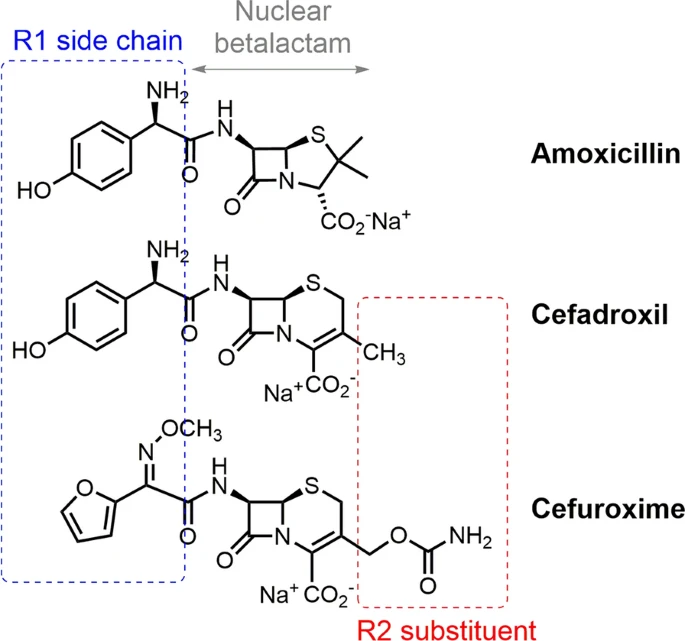- Research
- Open Access
Clinical and Translational Allergy
Clinical and Translational Allergy 10, Article number: 57 (2020)
Background
Analysis of cross-reactivity is necessary for prescribing safe cephalosporins for penicillin allergic patients. Amoxicillin (AX) is the betalactam most often involved in immediate hypersensitivity reactions (IHRs), and cefadroxil (CX) the most likely cephalosporin to cross-react with AX, since they share the same R1 side chain, unlike cefuroxime (CO), with a structurally different R1. We aimed to analyse cross-reactivity with CX and CO in patients with confirmed IHRs to AX, including sIgE recognition to AX, CX, CO, and novel synthetic determinants of CX.
Methods
Fifty-four patients with confirmed IHRs to AX based on skin test (ST) and/or drug provocation test (DPT) were included. Serum sIgE to AX and benzylpenicillin was determined by Radioallergosorbent test (RAST). Two potential determinants of CX, involving intact or modified R1 structure, with open betalactam ring, were synthesised and sIgE evaluated by RAST inhibition assay.
Results
Tolerance to CX (Group A) was observed in 64.8% cases and cross-reactivity in 35.2% cases (Group B). Cross-reactivity with CO was only found in 1.8% cases from Group B. ST to CX showed a negative predictive value of 94.6%. RAST inhibition assays showed higher recognition to CX as well as to both synthetic determinants (66% of positive cases) in Group B.
Conclusions
Cross-reactivity with CX in AX allergic patients is 35%, being ST not enough for prediction. R1, although critical for recognition, is not the unique factor. The synthetic determinants of CX, 1-(HOPhG-Ser-Bu) and 2-(pyrazinone) are promising tools for determining in vitro cross-reactivity to CX in AX allergic patients.

No comments:
Post a Comment